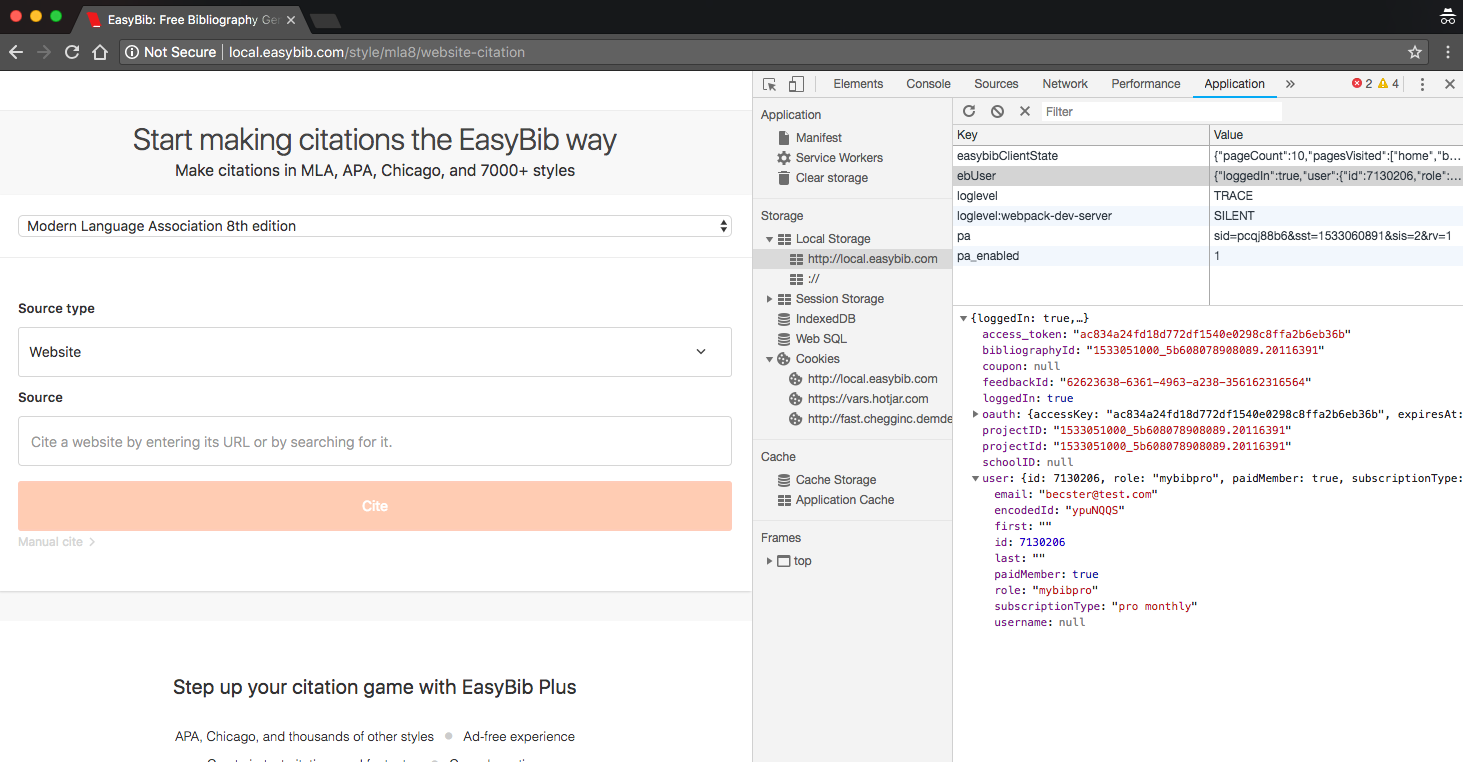JWT, Account Enumeration, and Security Galore
Joseph Ramirez, Phil Chmalts, and Rebecca Borison

Centralized authorization layer

- use a centralized authorization layer in your app-- don't one-off authorization for particular actions
- Although initial setup is more complex and expensive, it ensures consistent authorization across a large codebase
- all authorization decisions and enforcement should take place server side
- JWT is how we handle this with easybib

Information leaks
- correlating ids to volumes is probably not the best idea
-
Chegg used to include a sequential order number on all orders
-
a competitor started using that to figure out how many orders Chegg was doing
-
investors could also tracking it and trade based on it

Incremental User IDs

Superauth Dangers
Resources
- https://cybersecurity.ieee.org/blog/2016/06/02/design-best-practices-for-an-authentication-system/
- https://medium.com/technology-learning/how-we-solved-authentication-and-authorization-in-our-microservice-architecture-994539d1b6e6
JWT - What are they?
JSON Web Tokens are an open, industry standard method for representing claims securely between two parties.
It is a self contained way to share information between 2 parties. eg. Server and Client
The information inside the token can be trusted because it has been digitially signed via a shared secret, RSA (Private/Public key pair)
Created and maintained by Auth0 although the standard is open source
Great! What are they used for?
Most commonly JWT is used for authorization, and sent as an Authorization header on each request from a client (web app, mobile app, server, etc...)
The server then decodes and verifies that the JWT is valid and then is able to Authorize that request for the resource
Single Sign On is a feature that widely uses JWT nowadays, because of its small overhead and its ability to be easily used across different domains.
Can replace the need for keeping track of sessions in Redis or Memcached (more on this later)
Wait...what's in this?
XXXXXXXX.YYYYYYYY.ZZZZZZZZ
Header
Payload
Signature
{
"alg": "HS256",
"typ": "JWT"
}
Type of token and alg used to sign
Claims - Not mandatory but recommended. There are public, private and registered claims
{
"sub": "1234567890",
"name": "John Doe",
"admin": true
}
Each is base64 Encoded
HMACSHA256(
base64UrlEncode(header) + "." +
base64UrlEncode(payload),
secret)
Combo of header, payload, and secret encrypted by algorithm
Payload -- What goes in the claims?
Registered Claims - iss (issuer), exp (expiration time), sub (subject), aud(audience) -- These are recommended
Public Claims - These are things like email, listed in
https://www.iana.org/assignments/jwt/jwt.xhtml
Private claims - Any custom information that's not standardized, eg. user-role, whatever else you need to share
EVEN THOUGH THIS INFORMATION CANNOT BE TAMPERED WITH IT IS STILL READABLE BY ANY CLIENT AS IT'S JUST A BASE64 ENCODED STRING, SO SENSITIVE INFORMATION SHOULD NOT BE PUT IN HERE
JWT - IRL
eyJhbGciOiJIUzI1NiJ9.eyJjbGllbnQiOiJ3YmUiLCJlbWFpbCI6bnVsbCwiY2hlZ2dUb2tlbnMiOm51bGwsInVzZXJfcm9sZSI6Im5vdF9sb2dnZWRfaW4iLCJwYWlkTWVtYmVyIjpmYWxzZSwic2Vzc2lvbklkIjoiazAwdWd2a3RxcHE2OWw3OG43bjc4ajNmZDEiLCJjaGVnZ1VzZXJVdWlkIjpudWxsLCJleHAiOjE1MzMzMTM0NDJ9.bc5x7qLGn8PCfKny9cL9-IaAOaQK72kD4xFlYy9lUAw
This is our jwt returned from easybib.com/api/token
{
"client": "wbe",
"email": null,
"cheggTokens": null,
"user_role": "not_logged_in",
"paidMember": false,
"sessionId": "k00ugvktqpq69l78n7n78j3fd1",
"cheggUserUuid": null,
"exp": 1533313442
}
Decoded payload
I've pasted a JWT in FLS hipchat, go to JWT.io and try to verify the signature
Downsides to JWTs,
There is no inherit way to invalidate a token without having a store keeping track of the active tokens.
Uses a secret key which can be compromised, FREQUENT key rotation is very important.
Generally relying on libraries to create and sign these tokens which can have their own vulnerabilities.

VS
i++
- Easy to guess
- No security
- Faster for DBs
i++

- Can be created remotely
- Security by obscurity

UUID rfc, section 6 of it warns:
Do not assume that UUIDs are hard to guess; they should not be used as security capabilities (identifiers whose mere possession grants access), for example.
Resources
- https://littlemaninmyhead.wordpress.com/2015/11/22/cautionary-note-uuids-should-generally-not-be-used-for-authentication-tokens/
What is it
Security Through Obscurity (STO) is the belief that a system of any sort can be secure so long as nobody outside of its implementation group is allowed to find out anything about its internal mechanisms. Hiding account passwords in binary files or scripts with the presumption that "nobody will ever find it" is a prime case of STO.

Security by Obscurity
Auguste Kerckhoffs in the 19th century: A cryptosystem should be secure even if everything about the system, except the key, is public knowledge.
Early opposition to this type of security
locksmith Alfred Charles Hobbs, who in 1851 demonstrated to the public how state-of-the-art locks could be picked and who, in response to concerns that exposing security flaws in the design of locks could make them more vulnerable to criminals, said "Rogues are very keen in their profession, and know already much more than we can teach them."
Text
Abracadabra!!
FLS
By borisonr
FLS
- 602



